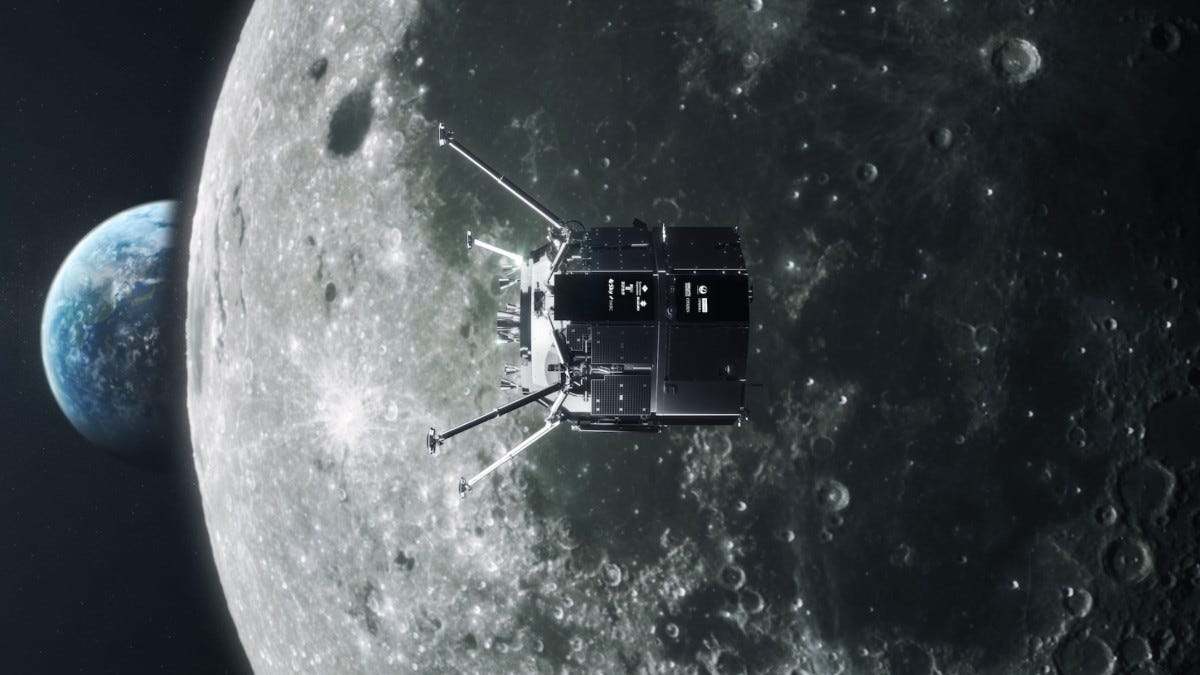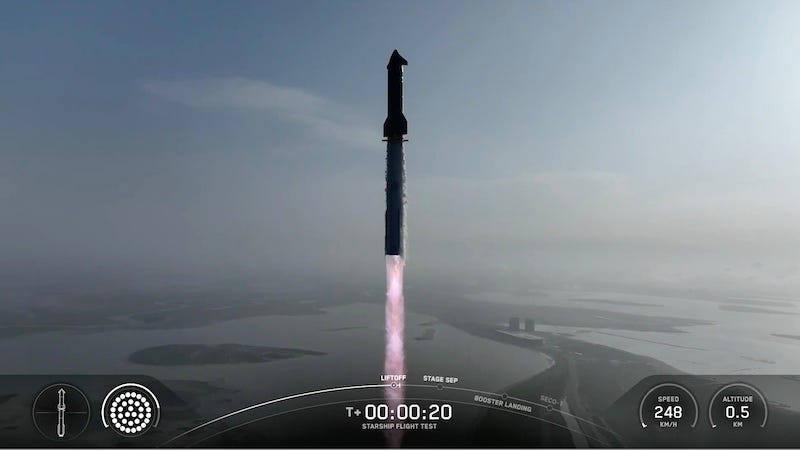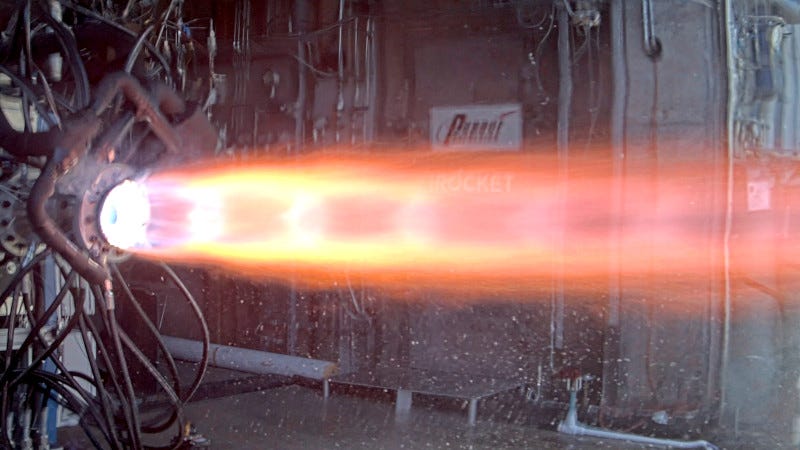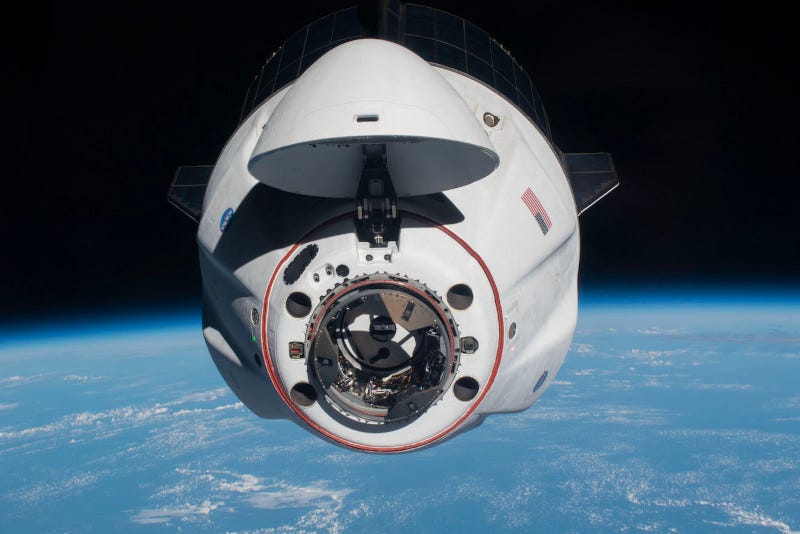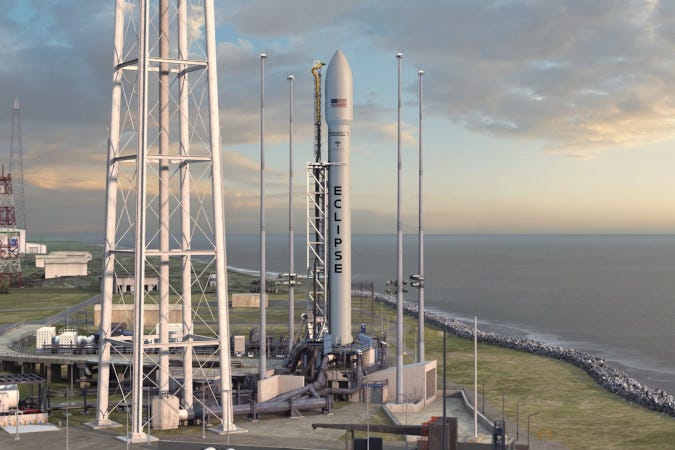ispace suffered another setback Thursday when the HAKUTO-R Lunar Lander was apparently lost during its landing attempt.
Telemetry was lost from the lander about 65 seconds before the scheduled landing time. After a tense half hour, the ispace commentators on the company live YouTube stream said that the mission control team had been unable to establish communications with the lander.
"We haven't been able to confirm, but MCC members will continuously attempt to communicate with the lander. And we will be reporting to you the latest state in the media interviewing that's scheduled in a few hours. So we need to never quit the lunar quest," the moderators said through a translator.
ispace released a statement late Thursday saying that, based on the currently available data, the Mission Control Center has been able to confirm the following: The laser rangefinder used to measure the distance to the lunar surface experienced delays in obtaining valid measurement values. As a result, the lander was unable to decelerate sufficiently to reach the required speed for the planned lunar landing. Based on these circumstances, it is currently assumed that the lander likely performed a hard landing on the lunar surface.
After communication with the lander was lost, a command was sent to reboot the lander, but communication was unable to be re-established.
The result was almost exactly the same as the previous ispace attempt to land on the Moon in April, 2023. On the HAKUTO-R Mission 1, telemetry was lost with the lander just before it was scheduled to land on the lunar surface.
-0-
The FAA is requiring SpaceX to conduct a mishap investigation for the Starship Flight 9 mission that launched on May 27 from Starbase, Texas.
All Starship vehicle and Super Heavy booster debris landed within the designated hazard areas. There are no reports of public injury or damage to public property.
The mishap investigation is focused only on the loss of the Starship vehicle which did not complete its launch or reentry as planned. The FAA determined that the loss of the Super Heavy booster is covered by one of the approved test induced damage exceptions requested by SpaceX for certain flight events and system components. The FAA evaluated each exception prior to launch approval and verified they met public safety requirements.
The FAA approved test induced damage exceptions for the Super Heavy booster including failure of the grid fin system, poor engine initialization during the landing burn, and a hard water impact due to insufficient engine thrust. It also induced damage exceptions for the Starship vehicle including engine failure during either the in-space burn or the landing burn and failure of either the thermal shield or the flap system during reentry. The loss of the Starship vehicle did not involve any exception.
-0-
A non-binding letter of intent for a proposed business combination has been jointly announced by the special purpose acquisition company ... or SPAC ... BPGC Acquisition Corp. ("BPGC"), and reusable space launch developer iRocket.
The parties have agreed on certain key terms of the proposed business combination and executed a non-binding letter of intent. Under the terms of the letter of intent, iRocket and BPGC would become a combined entity, with iRocket's existing shareholders exchanging their shares in iRocket for equity in the combined public company.
The letter of intent contemplates a pre-money equity value of iRocket of $400 million, before potential earnouts based on share price performance. The parties will announce additional details regarding the proposed business combination when a definitive agreement is executed, which is expected to occur in the summer of this year, with a closing anticipated before year end.
No assurances can be made that the parties will successfully negotiate and enter into a definitive agreement, or that the proposed transaction will be consummated on the terms or timeframe currently contemplated, or at all.
-0-
Coming up, President Trump and Elon Musk face off on social media, and another step forward for the Office of Space Commerce's TraCSS program. But right now, why not take a minute to become a paid subscriber to The Journal of Space Commerce. Whether you’re a space professional or enthusiast, paid subscribers have first access to premium articles and podcasts focused on the new space economy. Just visit www.exterrajsc.com on Substack, and help keep The Journal of Space Commerce independent as we chronicle, cajole and, when necessary, critique the commercial space industry.
-0-
What started as a political argument over the "Big Beautiful Bill" has escalated into a threat to America's manned space program. Since Musk criticized the reconciliation bill on X saying it didn't cut the deficit, Trump fired back on Truth Social, saying "The easiest way to save money in our Budget, Billions and Billions of Dollars, is to terminate Elon’s Governmental Subsidies and Contracts. I was always surprised that Biden didn’t do it!"
In reply, Musk posted on X "In light of the President's statement about cancellation of my government contracts, @SpaceX will begin decommissioning its Dragon spacecraft immediately."
It's not clear how much of this is serious and how much is bluster. But in the opinion of The Journal of Space Commerce, we feel like this is absolutely not the time or place for these two very wealthy and powerful men to be playing this kind of game. Both need to take a step back, and a deep breath, and consider what is best for the country. A goal which both have claimed to champion. Nor is it good for the industry to have these kinds of (hopefully) ridiculous threats thrown around. Nobody likes to see grown men shrieking "I'll just take my toys and go home" at one another across the Internet.
This is the kind of ridiculous sideshow that is not good for anyone right now, other than an opposition party which is popping its popcorn and getting ready to sit back and enjoy the show.
-0-
Impulse Space recently announced it has raised $300 million in a Series C funding round—one of the largest venture rounds in the history of the space industry. The round, led by Linse Capital, brings Impulse’s total capital raised to $525 million.
The pre-emptive raise is both a positive signal about Impulse’s business trajectory and a direct response to surging customer demand. With over 30 signed contracts (totaling nearly $200 million in value) and growing interest from every sector, Impulse will use the funding to scale and execute a backlog of missions that require faster, more flexible, and more cost-effective in-space mobility.
This Series C funding will accelerate Impulse’s mission in three key ways: adding engineering, manufacturing, and mission operations jobs while continuing to vertically integrate for cost, quality, and schedule control; accelerating R&D to expand mission profiles—including integrating electric propulsion for long-duration missions—and develop new vehicles for national security and NASA applications, and; scaling production on Mira and Helios to meet a growing backlog of demand.
-0-
Northrop Grumman Corporation has invested $50 million into Firefly Aerospace to further advance production of their co-developed medium launch vehicle, now known as Eclipse. The companies continue to make progress in the development of Eclipse flight hardware with qualification testing underway and more than 60 Miranda engine hot fire tests performed to date.
Based on Northrop Grumman’s Antares and Firefly’s Alpha rocket, Eclipse offers a significant leap in power, performance, production cadence, and payload capacity. The launch vehicle retains the flight-proven avionics from the Antares program with additional upgrades, including a larger payload fairing. Eclipse also utilizes the same first stage Firefly is developing for Antares 330, and retains scaled-up versions of Alpha’s propulsion systems and carbon composite structures, allowing the team to rapidly build and test Eclipse with significant production efficiencies and economies of scale.
Eclipse is equipped to deliver 18 tons of cargo to low Earth orbit or just over seven-thousand pounds of cargo to geosynchronous transfer orbit. Eclipse will first launch from Wallops Island, Virginia, as early as 2026.
-0-
The Office of Space Commerce has announced that the Traffic Coordination System for Space (TraCSS) has implemented Program Increment 1.2 for its beta users. This release introduces on-demand screening of operational ephemerides (EFF-em-AIR-eh-dees) and enables bulk submission capabilities—ideal for operators of large satellite constellations.
As an Agile software development program, TraCSS continues to deliver upgrades that add new capabilities in preparation for the migration of users from the Department of Defense.
The initial version, released in September 2024, distributed TraCSS-generated Conjunction Data Messages (CDMs) to beta users via the Space-Track.org interface. Subsequent updates enabled direct CDM distribution through TraCSS APIs.
With this latest update, beta-user satellite operators can now submit ephemerides to TraCSS at any time and receive conjunction analysis results within two to five minutes. This “on-demand screening” marks a significant advancement. Operators of large constellations can also submit thousands of ephemerides at once via “bulk submissions,” greatly enhancing space situational awareness and safety.
The TraCSS team is preparing to expand user participation in advance of a full production release scheduled for early 2026.
-0-
And those are some of the top stories we covered for you on The Journal of Space Commerce this week. You can get daily updates on space commerce by subscribing to The Journal of Space Commerce on Substack at www.exterrajsc.com. And please consider becoming a paid subscriber. Whether you’re a space professional or enthusiast, paid subscribers have first access to premium articles and podcasts focused on the new space economy. Just visit www.exterrajsc.com and help keep The Journal of Space Commerce independent as we chronicle, cajole and, when necessary, critique the commercial space industry.
You Might have Missed:
NASA Invests in Artemis Studies to Support Long-Term Lunar Exploration
'Full Steam Ahead' Mission Launched by Rocket Lab
Voyager Announces Launch of Initial Public Offering
Neuraspace Selected for CASSINI Business Accelerator Program
Eighth GPS III Satellite Launched into Orbit




